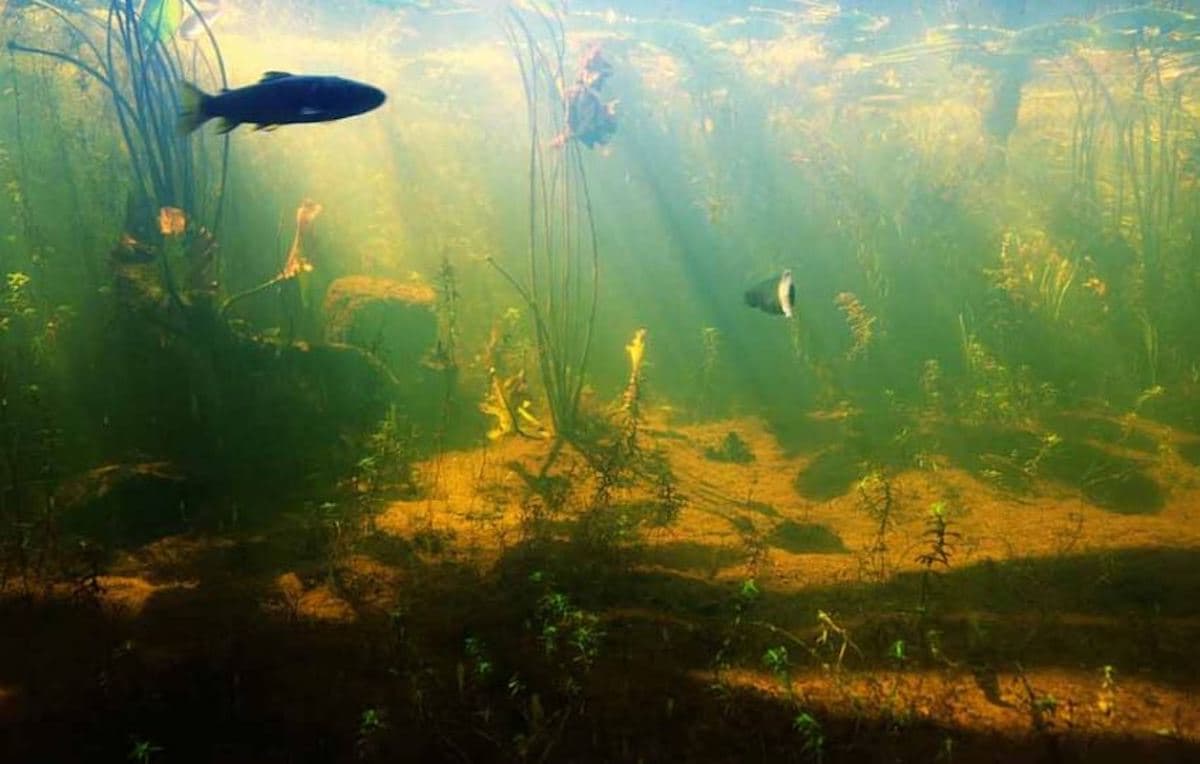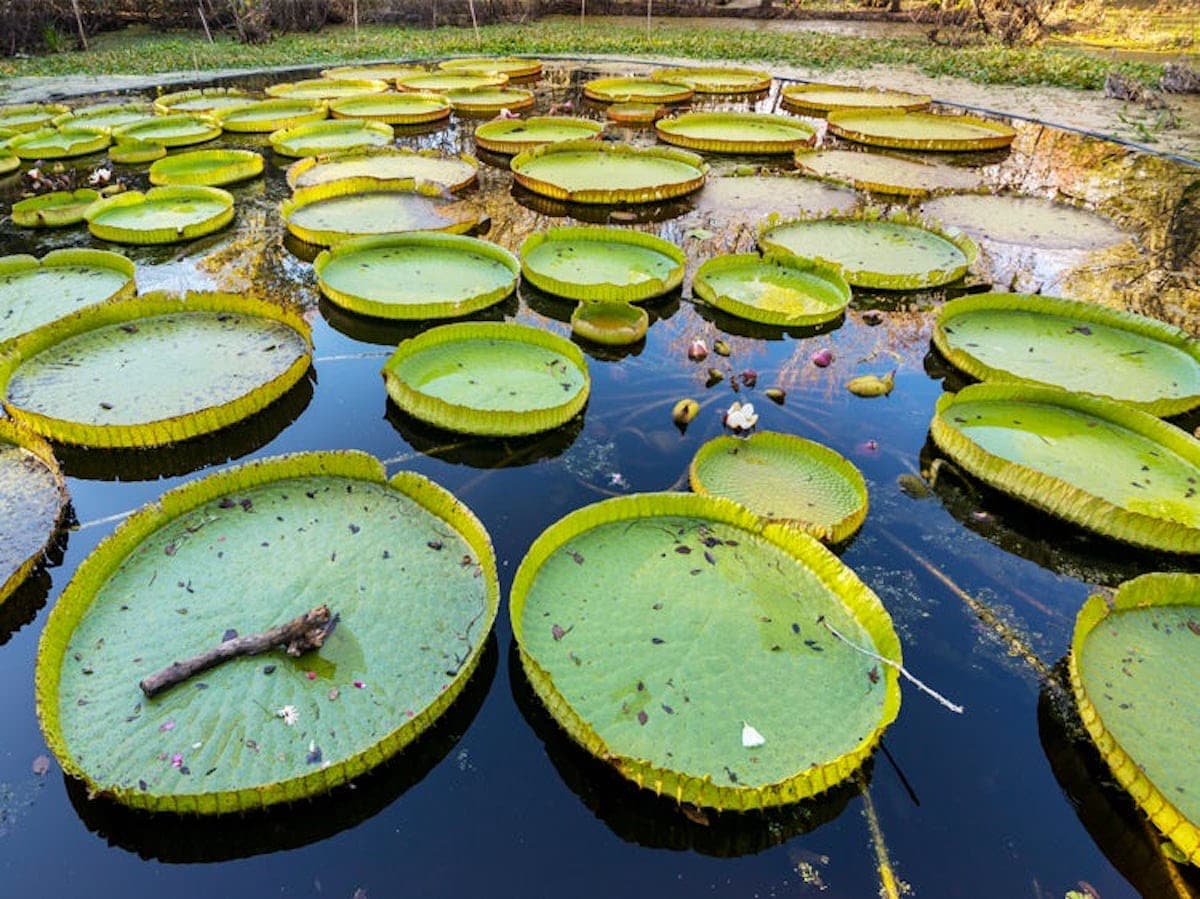Despite often being the #1 complaint of many pond owners, aquatic plants do serve a vital purpose in any pond ecosystem. They can add vital fish habitat, stimulate the food chain, add to the beauty of the pond, and help filter the water for a cleaner pond habitat. Conversely, aquatic plants can be viewed as a nuisance when they overtake a pond, limit fishing and swimming opportunities, create foul odors, and turn your beautiful pond into a mess. To understand how to manage aquatic plants, we must first understand the categories of plants and how they are categorized.

Desirable vs. Undesirable
Beauty is in the eye of the beholder. The question is often asked, “What is a desirable aquatic plant”? Very often, the answer is, whatever you want it to be. A plant isn’t a weed until it is unwanted, so the plants in your pond are simply just growing inhabitants until they are no longer wanted and are then considered a weed. The exact species of each plant and determining which is desirable vs undesirable is simply left to the pond owner. From a pond management standpoint, desirable plants would be those that use up a fair amount of nutrients, are not overly aggressive in their reproduction, and add some sort of value to the pond like aesthetics, fish habitat, or water filtering.
Invasive vs. Non-invasive
There is a bit more distinction here. Invasive plants are also considered non-native plants. These are plants that are not typically found in a specific area or habitat, but have been established in the area by human or animal activities. Non-native species are often quite aggressive and can take over a pond. Just like with non-native insects and animals, they can create an imbalance quickly because they have no know “predators” or in the case of plants, they don’t have the same level of competition for nutrients. Invasive or non-native plants can create problems in a pond quickly and should be managed and prevented from entering if at all possible.
Non-invasive or native plants can also be aggressive, but can be easier to manage in some cases. For most pond managers, these would be considered more desirable than non-native or invasive. They can be easier to manage and there are not as many restrictions when it comes to moving boats and equipment from pond to pond as the plant species involved are not invasive.
Rooted Plants
As the name implies, these are any aquatic plants that are rooted into the soil or substrate. These can either be submerged or rooted to the bottom of the pond, or emergent along the shoreline.
Submerged plants can grow in varying depths in your pond and serve as structure for many species, depending on that depth. Common species of submerged plants are Coontail, Hydrilla, Pondweed, and Milfoil. Plants are valuable in providing needed oxygen in the water through photosynthesis. However, too many submerged plants can be a detriment to your pond. During the nighttime hours, the plants will actually take in oxygen, thus lowering the oxygen in the water for the fish. As plants die, bacteria in your pond will work to decompose the organics. These bacteria will also use up available oxygen so if a large die off occurs, it can cause an oxygen crash. Submerged plants can also limit some fishing opportunities, especially in dense areas and/or shallow areas where the plants grow all the way to the surface.
Emergent plants will grow along the shoreline and in shallow areas. Common emergent plants are Reeds, Cattails, and Arrowhead. Emergent plants serve several functions as well. First, they provide structure for several species of fish and feeding territory for predator fish, such as Bass and Pike. Pike will also use shallower areas with emergent vegetation for breeding grounds. Emergent vegetation also serve as a shoreline stabilizer to help prevent runoff and erosion in the pond. They will also help soak up some nutrients contained in the runoff before it gets into the water and causes more algae or floating plants to grow.
If introducing rooted plants to your pond, make sure you use native, non-invasive species and work to maintain their levels. Choose species that will serve your pond well with what you are trying to accomplish. For example, Cattails can provide great wildlife habitat, but they are very aggressive and can take over a pond quickly. They also use very little nutrients, so they are not the best for soaking up nutrient rich runoff.
Physical removal of these plants, when over populated, is the best management practice. This not only removes the plants, but also the organics and nutrients tied up in those plants. Chemical treatments can also be used, but care should be taken to ensure you do not have an oxygen crash when the plants die. Aeration during any chemical treatment is recommended.

Floating Plants
Algae is the most common form of floating plant. There are many species in the algae family, and some are more useful than others. There is a divide in the approach to algae in ponds that runs pretty much along the Mason-Dixon line.
In the North, algae is considered bad for a pond. It makes the pond green, which many find unattractive. They’d prefer rooted plants and a clearer water column.
In the South, algae is promoted and often times pond managers introduce fertilizer directly into the water to stimulate an algae bloom. The idea in this management is that the algae bloom will provide food for small, forage fish and it will help shade out sunlight to prevent rooted plants from taking hold. This allows predator fish to feed more easily since forage fish have no place to hide.
Personal preference aside, the biggest concern with algae isn’t the growing of it, it’s when it dies. Large algae blooms, while alive, offer great benefit to the pond. They provide forage for bait fish and add oxygen through photosynthesis. However, algae blooms can die off just as quickly. This quick die off of a bloom can be caused by a few cloudy days in a row and/or a cold rain. When this die off occurs, oxygen levels can plummet as bacteria kick into overdrive consuming the organics. This can lead to catastrophic damage to your fish population. Having aeration in the pond can greatly help to prevent a fish die off.
Duckweed and Watermeal, or other similar species are typically considered an eyesore and don’t serve much function in a pond. Chemical treatments for these plants can be successful, but they are easily transported on wildlife and can be reintroduced to your pond quickly.
Other floating plants, such as Lily Pads, Water Hyacinth, and Spatterdock can serve as fish structure with the large floating leaves and provide good fishing opportunities. Like Cattails, these can quickly spread and take over areas so keeping them in check is important.